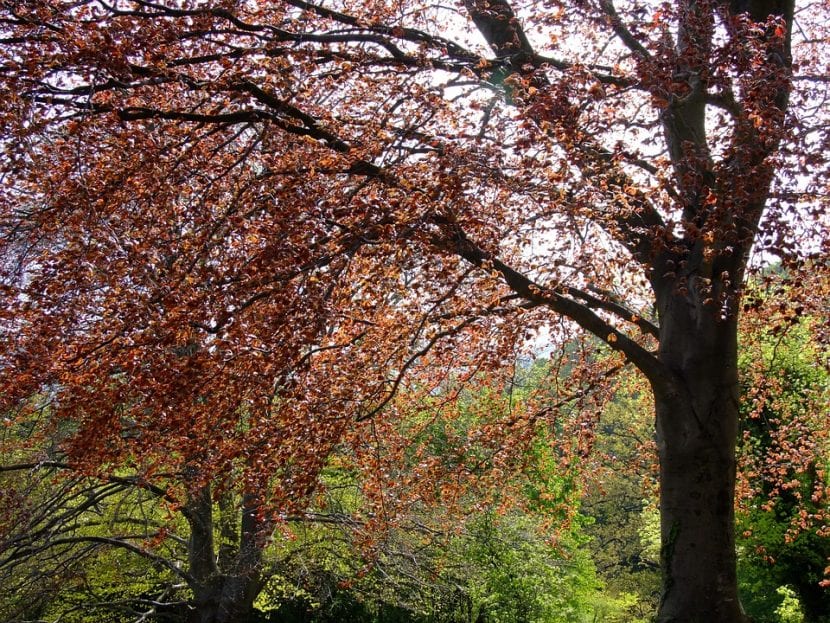
The Fagus They are very large trees with a long life expectancy. Although they have a medium growth rate, and even slow compared to other arboreal genera, their beauty is such that they decorate any garden from a very young age.
But apart from being a pleasure for the eyes to have around, they are also excellent natural umbrellas during the summer, since their foliage is dense and their canopy can be wide. Know them.
Origin and characteristics
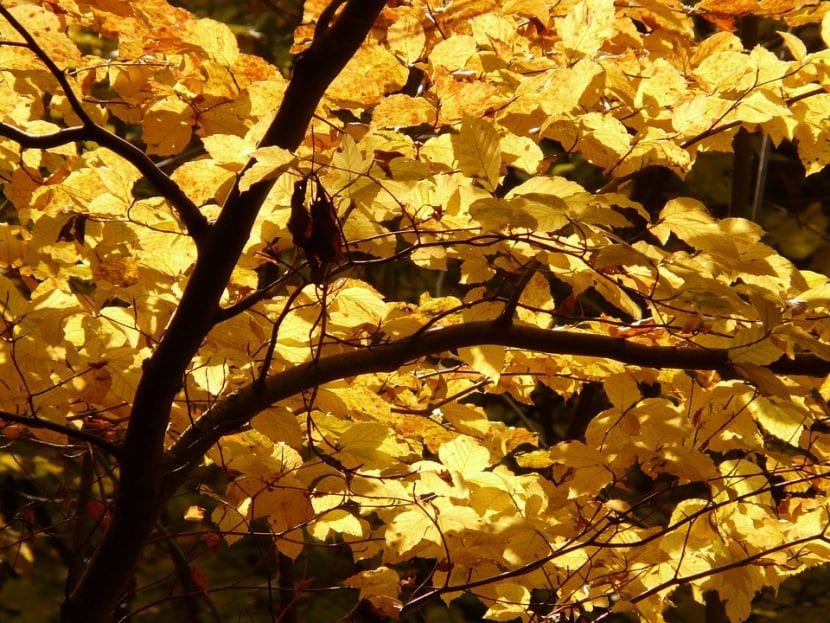
Our protagonists are deciduous trees belonging to the genus Fagus, which is made up of ten species native to the temperate regions of America, Asia and Europe. Depending on where they grow, they acquire one size or another: thus, while if they grow in isolation they tend to have a cylindrical shape, if they grow in groups (as in the woods) take the shape of a tree proper, with a bare trunk that branches at a certain distance (1-2 meters) from the ground.
The leaves are whole or serrated, with a size of 5-15cm long by 4-10cm wide. These are green or reddish, and turn yellow, orange, or purple in fall before falling. The flowers, known as friz, are unisexual and pedunculated, the female being somewhat smaller and erect than the male. The fruit, called hayuco, is 10-15mm long and contains two pyramidal seeds that are also edible., especially after toasting.
Main species
There are ten species, but the most popular are only two (the first two). Still, we want to show you some more so that you know them:
Fagus sylvatica
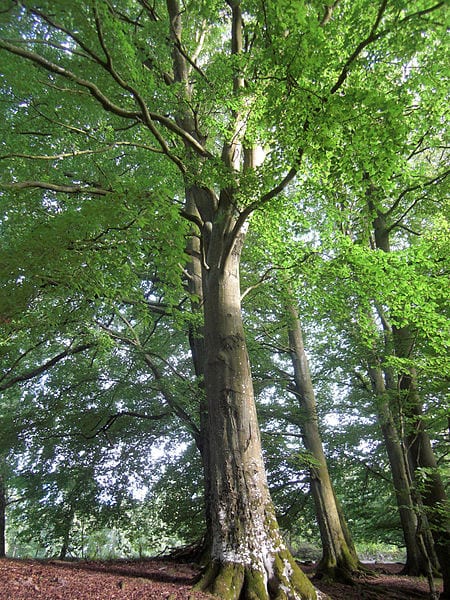
Image - Wikimedia / Gunnar Creutz
Known as common beech, it is native to Europe, even being found in Spain (extreme north of the peninsula). Reaches a height of 35 to 40 meters, with a straight trunk with smooth bark and an oval crown. Here You have more information.
fagus crenata
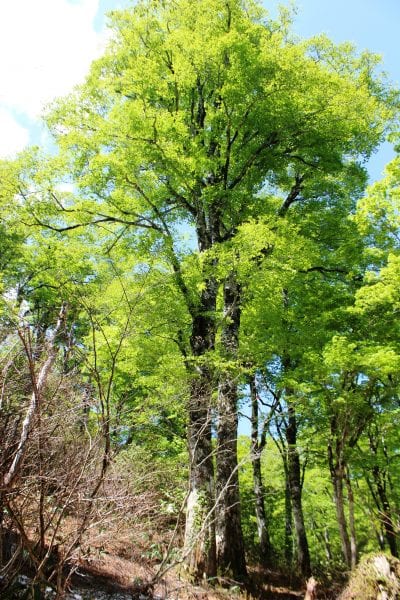
Image - Wikimedia / Alpsdake
Known as Japanese beech or buna, it is an endemic tree to Japan, being one of the dominant species of its deciduous forests. Reaches a height of 35 meters, with a rounded cup.
fagus orientalis
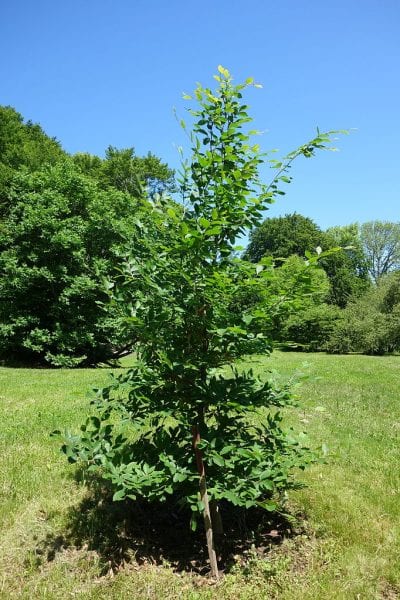
Image - Wikimedia / Daderot
Known as Eastern Beech or Asia Minor Beech, it is a native tree from northwestern Turkey east to the Caucasus and the Elburz Mountains. Reaches a height of up to 45 meters, with a trunk thickness of up to 3m.
It is usually hybridized with the Fagus sylvatica, leading to Fagus x taurica.
Mexican fagus
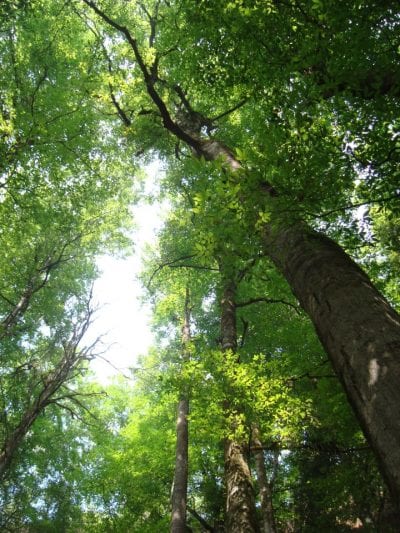
Image - Facebook / @ FagusGrandifoliaSubspMexicana
Known as Mexican beech or beech, it is an endemic species of northeast Mexico. Reaches a height of 25 to 40 meters with a trunk diameter of up to 2 meters. It is sometimes considered a variety, its name being Fagus grandifolia var. mexican.
fagus grandifolia

Image - stlawrencelowlands.wordpress.com
Known as the American beech, it is a native species of eastern North America. Reaches a height of 20 to 35 meters, with a silvery-gray bark.
What are their cares?
If you want to have a specimen of beech, we recommend taking care of it as follows:
Climate
So that there are no problems, it is important that the climate is temperate; that is to say, that the four seasons are well differentiated and that in winter the mercury of the thermometer falls below zero. In other areas, such as the Mediterranean for example, they can live well as long as they are grown in mountainous regions.
Location
Always display abroad, in semi-shadow.
Earth
Being trees, and in addition to being large, sooner or later they need to be planted in the ground. The earth It must be slightly acidic, rich in organic matter and with good water absorption capacity.
While it is young, it can be potted with substrate for acidic plants, or with volcanic sand (akadama, pomx or similar). Use the latter if you live in areas with very hot summers (temperature over 30ºC).
Irrigation
It does not support drought at all, but neither does waterlogging. You have to water an average of 4 times a week during the hottest season and an average of 2 times a week the rest of the year.
Whenever possible, use rainwater; failing that, use lime-free water. If you can only irrigate with tap water and it is calcareous, dilute the juice of half a lemon in 1l / water or a small spoonful of vinegar in 5l / water. To check that the pH has dropped to 4 to 6, use pH strips that they sell for example here or in pharmacies.
Subscriber
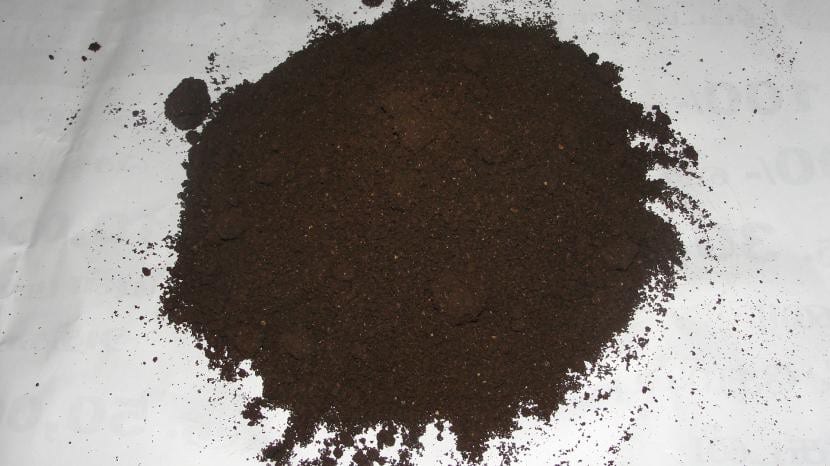
From early spring to late summer with organic fertilizers, such as compost, mulch, worm castings, sheep manure or goat, etc. Spread a layer about 4-5cm thick all around the trunk, and blend it into the soil surface.
If you have your beech in a pot, use liquid fertilizers, such as this for acid plants following the indications specified on the package.
Multiplication
It multiplies for seeds in winter (They need to be cold before germinating). If you are in a place where frosts are registered every year, you simply have to plant them in pots or seedling trays with substrate and let nature take its course.
Otherwise, you will have to stratify them in the fridge for three months in a tupper with vermiculite (get it here), and then sow them in a seedbed.
Pruning
Don't need it. Perhaps cut off dry, diseased, weak, or broken branches in late winter. If you see a branch that is growing too long, to the point that it is starting to look a bit messy, you can trim it back.
Rusticity
Resists up to -18ºC, but I insist, in hot climates they cannot live. At the very least, there should be weak frosts so that it can stand in winter and resume strong growth in spring.
Its ideal temperature range is between 30ºC maximum and -18ºC minimum.
What uses are given to Fagus?
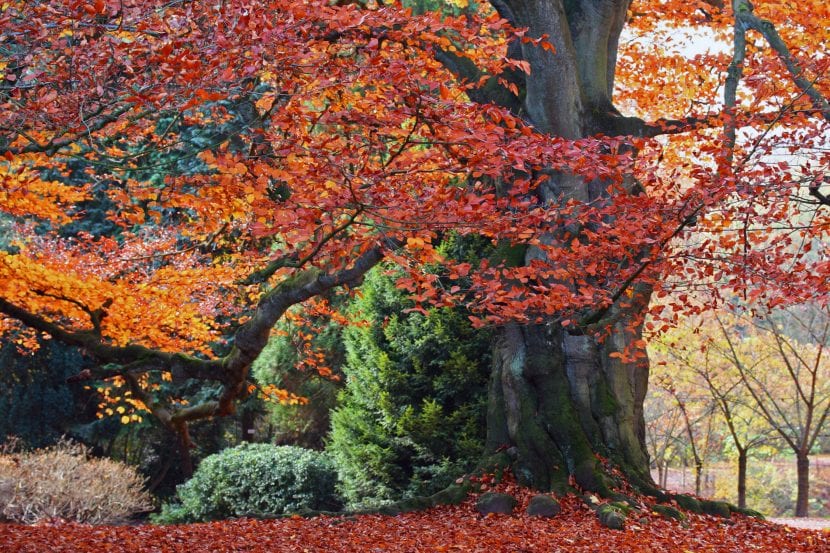
Ornamental
They are very decorative trees, ideal to have as an isolated specimen in large gardens. Furthermore, they are also used as bonsai.
Edible
Beech seeds are edible and can be eaten raw or freshly roasted. Its flavor is reminiscent of hazelnuts.
Wood
Its wood is heavy and resistant, so it is used in carpentry for the manufacture of furniture and tools.
What did you think of the Fagus?